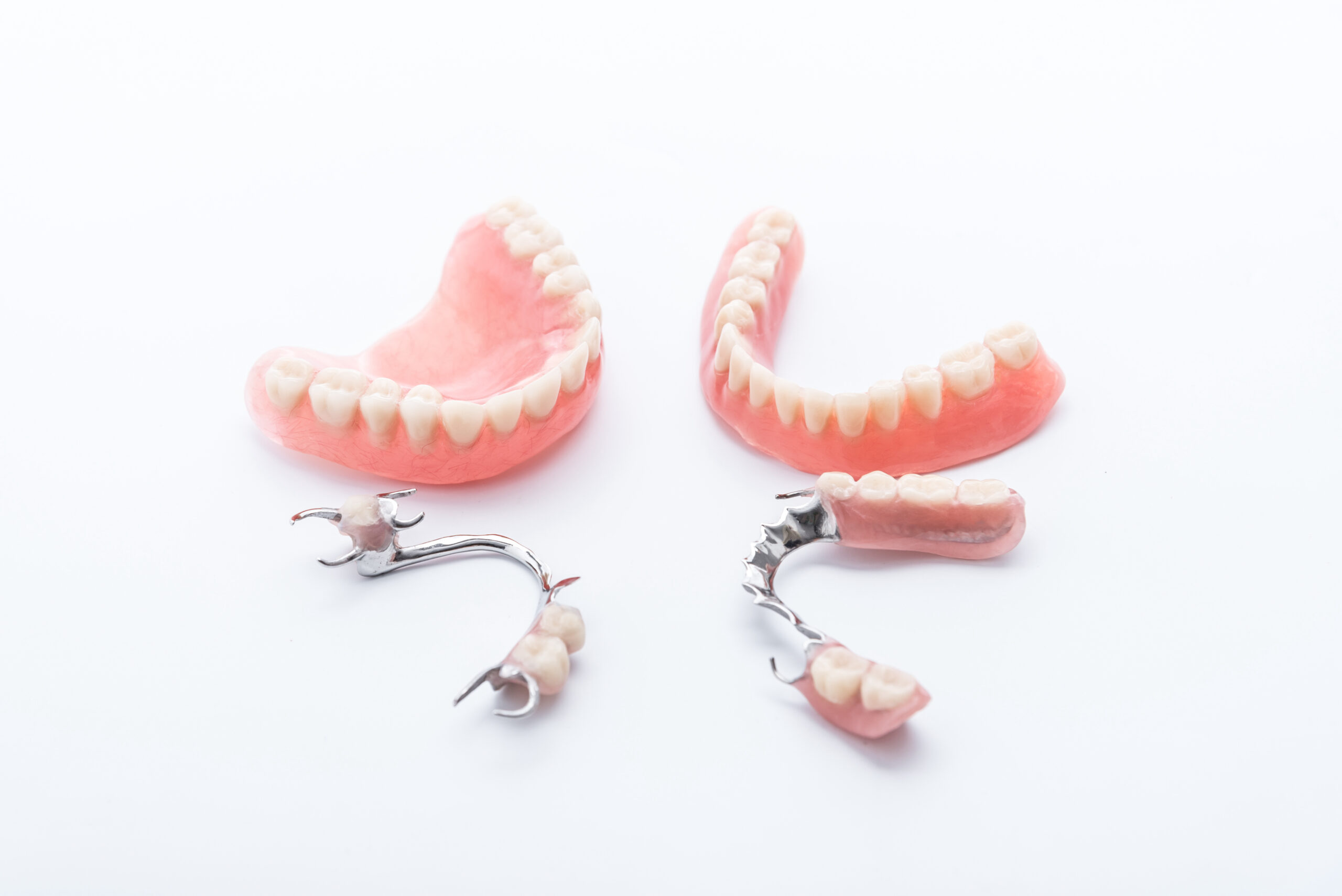
Frequently Asked Questions About Dentures
If you are missing some or all of your teeth, your dentist may recommend a replacement option like dentures. Dentures are a type of prosthetic device used to replace missing teeth. These artificial teeth and gums are formed to your mouth shape and supported by surrounding hard and soft tissues in the oral cavity. There are several types available to meet the needs of different patients. Learn more about the types available, how they are created, and why so many people choose them to restore their smiles.
What Are Dentures Made Of?
Although there are a variety of denture materials available, the most common include plastic, specifically acrylic resin. While porcelain dentures are available and last longer, acrylic tends to be stronger and more resilient to normal chewing forces. The acrylic also adheres securely to the base of the dentures, making it easy to adjust. These dentures are also lightweight and less costly than porcelain. The biggest disadvantage of acrylic resin is that they tend to wear down faster than porcelain teeth and may need to be replaced about every five to eight years.
What are the Types of Dentures?
According to the U.S. National Library of Medicine, there are two main types of dentures: complete (full) and partial.
Traditional complete full dentures are used when a patient needs to replace all of their teeth. These sit on top of the gums instead of being anchored to existing teeth, like with dental bridges. Complete (full) dentures are often placed within 8 to 12 weeks after having all the teeth extracted.
When a patient still has some remaining natural teeth, a dentist may recommend partial dentures. Partial dentures are made up of a pink-colored base attached to a metal component. These pieces help hold the denture securely in the mouth. Partial dentures are removable, making them a convenient option.
How are Dentures Constructed?
Creating custom dentures to fit a patient’s mouth is a straightforward process that includes the following steps:
- A model is created. Your dentist will make denture impressions of your jaw and mouth and then create models based on these impressions using plastic or wax.
- The model is placed in an articulator. An articulator is a mechanical device that represents the jaw and attaches the teeth using wax.
- The wax is carved. The technician will then carve and shape the wax model to look like natural gums. This wax model is later used for the finished dentures.
- The dentures are set in a flask. A flask is a holding device in which plaster is poured to maintain the proper shape of the dentures. Once set, the flask is placed in hot water to melt off the wax.
- Acrylic is injected. After removing the wax, a liquid separator is added to the plaster layer to prevent the acrylic from sticking. The acrylic is then injected into the flask to replace the wax.
- The plaster is removed. The plaster mold is then carefully removed and the dentures are placed into an ultrasonic bath to remove any leftover plaster.
- The denture is trimmed and polished. Finally, the dentures are trimmed and polished before calling in the patient for their initial fitting.
Benefits
It can sometimes be hard to determine if you are a good candidate for dentures. It’s important to consider the many benefits that come from getting dentures. For example, dentures can often increase your self-esteem as they improve your smile and overall appearance. Dentures can also support your facial muscles and improve your speech.
Today, dentures are designed to be both functional and comfortable. They can be easily removed to allow for a thorough clean and allow patients to eat foods that they otherwise might not be able to chew. Best of all, most dental insurance benefits plans now cover dentures.
Schedule an Appointment or Call to Ask Any Questions About Dentures
Do you want to see if you are a good candidate for dentures? Reach out to the knowledgeable dental team at Artistic Touch Dentistry to schedule a consultation.

